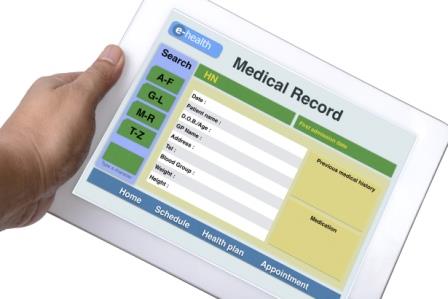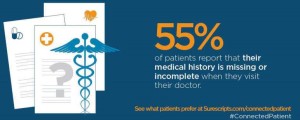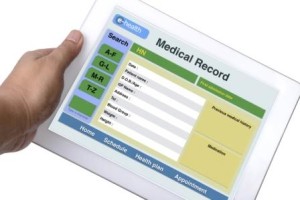
When it comes to engaging with consumers – with patients – through and with technology, the healthcare industry has room for improvement as compared to other industries. Consumers interact with technology across most other aspects of their lives every single day, from banking, to buying almost any consumer good imaginable, to watching or listening to digital content. But how do they feel about the lack of technology when they visit their doctor or file an insurance claim? As it turns out, they aren’t happy about it and are demanding that the industry change.
I, like many of us, found myself responsible for the care of a relative. In my case, a mother with severe Alzheimer’s. Finding her past medical records and maintaining her new records, and making them available to new providers and caregivers as we navigated our way through the healthcare system as her disease progressed should not have been as difficult as it was.
In Search of Connected Healthcare
Earlier this year, Surescripts conducted the Connected Care and the Patient Experience survey to find out how patients feel about the use of technology and their expectations for a digitally-driven healthcare experience. The results showed that an overwhelming percentage of patients not only support technological advancement throughout healthcare, but feel discouraged by the absence of information sharing and digital access to their doctors, their personal information, and health data. The data shows that those of us who work in healthcare can no longer ignore the need to infuse technology for improved patient engagement and an enhanced digital experience. Our well-being, satisfaction and lives depend on it.
What Consumers Say
 In the survey of 1,000 adults, representing patients, caregivers and those suffering from chronic conditions, 61 percent reported that when they come to the doctor’s office, their care provider usually doesn’t know their allergies, and almost half of the patients note that doctors don’t know about their recent medical history, which could easily lead to unnecessary tests or recommendations. This also places a burden on patients to connect the dots themselves, with 29 percent of respondents saying they fax or physically transport test results, X-rays, or health records from one doctor’s office to another.
In the survey of 1,000 adults, representing patients, caregivers and those suffering from chronic conditions, 61 percent reported that when they come to the doctor’s office, their care provider usually doesn’t know their allergies, and almost half of the patients note that doctors don’t know about their recent medical history, which could easily lead to unnecessary tests or recommendations. This also places a burden on patients to connect the dots themselves, with 29 percent of respondents saying they fax or physically transport test results, X-rays, or health records from one doctor’s office to another.
A Hard Reality
For many, these statistics are not just a burden or afterthought, but a hard reality. Linda Stotsky, patient advocate and senior director of healthcare at LogicNets, Inc, is one of those caregivers who has lived through the horrors of a disconnected health system when her daughter was diagnosed with cancer. Stotsky dedicates her message to the belief that patients deserve better and expect to be partners in their care.In an era where we can contact a family member on the other side of the world almost immediately, it’s no wonder consumer’s question why they can’t receive health information just as quickly via any mobile device or even in their home.
The Vision
Making health records available to the right person at the right place at the right time, in a secure manner and while respecting patient’s individual privacy wishes, is not a simple endeavor. To get to the day when all heath records are electronically available and patients have the digital tools to communicate with their providers will take time and the efforts of many — providers, electronic health record developers, policy makers, payers, consumer advocates and others. Patience and collaboration will be required.
But Surescripts’ survey provides a voice for millions of patients who are demanding the healthcare industry adopt technology to improve information accessibility and relieve administrative burdens. The fight continues, but the possibilities are endless for what can be achieved when we join forces and work as one.





